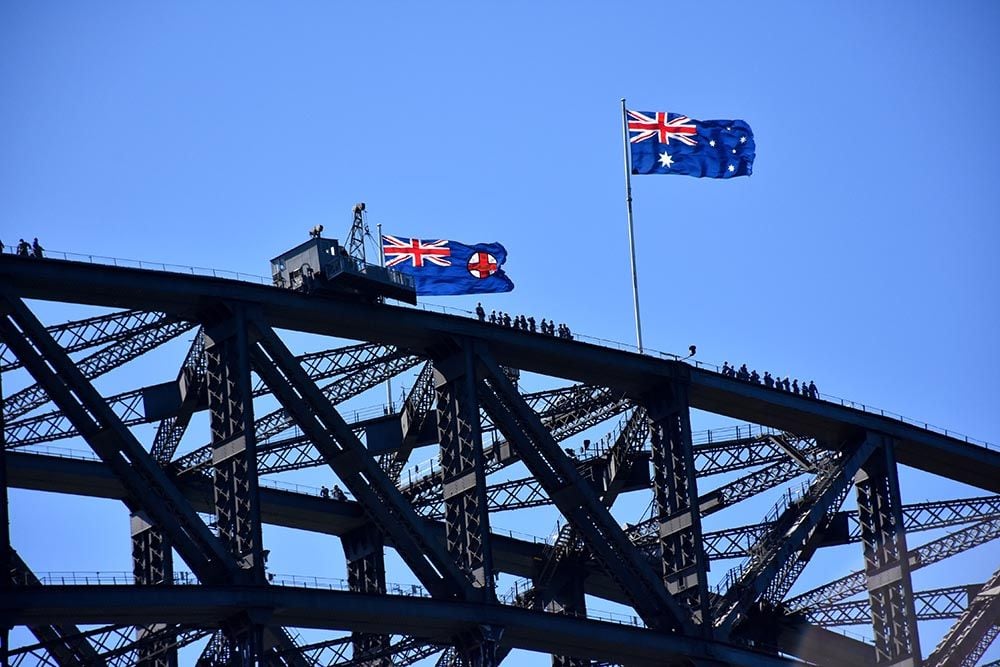Australian Dollar Rises as Risk Assets Recover but Labour Data Sees RBA Remaining on Hold
- Data surprises on downside as economy sheds 3.9k jobs in July.
- But full-time work replaces part-time, and unemployment falls.
- RBA still seen on hold, but risk-recovery lifts AUD on Thursday.

Image © Desiree Caplas, Adobe Stock
The Australian Dollar rose across the board Thursday but this had more to do with a general risk-on mood in markets than it did the mixed labour report released overnight.
Australia's economy actually lost -3.9k jobs in July when analysts had expected a 15k increase, according to Australian Bureau of Statistics data released Thursday, yet the unemployment rate fell 5.4% to 5.3%.
The unemployment fall came in response to a fall in the participation rate, from 65.7% to 65.5%, which artificially reduced the number of people classed as unemployed during the month.
A hidden positive in the report was that the economy added 19k full-time jobs during the month, while shedding -23k part-time jobs. Economists have frequently lamented the fact that much of Australia's recent jobs growth was in part-time work.
"Despite the weak headline figure, the underlying trend remains firm," says Adam Cole, chief currency strategist at RBC Capital Markets. "Taking account of the split between full time (up 19K) and part time (down 23K), this month’s data were close to expectations and we also note that unemployment fell in the month."
The AUD/USD traded at 0.7275 up 0.58% on the day and GBP/AUD was trading at 1.7479, down -0.38% at 13.43 B.S.T on Thursday, August 16.
Thursday's price action comes as the Aussie Dollar also enjoys a tailwind from improving risk appetite among investors, which was the result of a recovery of the Turkish Lira and signs of a possible trade-detente between the US and China. This lifted commodity prices and "risk assets" more broadly on Thursday.
The Aussie has always been sensitive to commodities given exports from down under are predominantly comprised of raw materials. Prices of these goods, and therefore the Aussie, are heavily influenced by the ebb and flow of expectations for the global economy.
The next major event for the Australian currency is a testimony by Reserve Bank of Australia (RBA)governor Lowe on Thursday evening, but the labour market data is unlikely to change his stance that interest rates are unlikely to rise before 2020.
The moribund outlook for interest rates limits expectations of the Australian Dollar, which has suffered from a deterioration of the Aussie rate outlook so far in 2018. Interest rates have significant influence over international capital flows and demand for a currency.
"Regardless of a falling unemployment rate, the Reserve Bank of Australia (RBA) will probably want to wait before hiking interest rates for now," says Antje Praefcke, an analyst at Commerzbank. in a note Thursday. "Wage growth remains subdued and at +2.1% yoy in Q2 it remains below the levels of 3.5-4% seen before the financial crisis. Moreover the RBA still sees spare capacity in the market."
Spare capacity is the difference between the economy's potential and actual level of activity. Whilst the RBA says it expects to raise rates next rather than cut them, Thursday's data won't change its currently-neutral stance according to Praefcke.
"Unless economic data over the coming weeks significantly surprises to the upside the RBA will stick to its wait and see approach for the foreseeable future. As a result the AUD will only have limited upside potential against the USD too," Praefcke concludes.
Advertisement
Get up to 5% more foreign exchange by using a specialist provider to get closer to the real market rate and avoid the gaping spreads charged by your bank when providing currency. Learn more here




